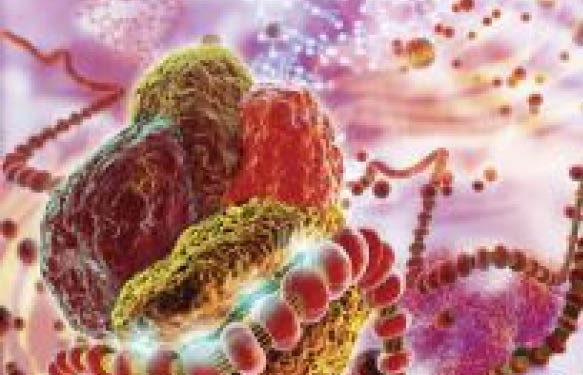PGE2 (Prostaglandin E2) is a lipid mediator with key links to inflammation and cancer. PGE2 is produced by a wide variety of tissues and in several pathological conditions, including inflammation, arthritis, fever, tissue injury, endometriosis, and a variety of cancers. Recombinant prostaglandins are also used as therapy for different conditions (pulmonary hypertension, glaucoma, ulcers… even to make eyelashes grow!). So PGE2 has, as many things in life, a bright and a dark side.
Let’s talk about the dark side of PGE2 today. Reports indicate that its overexpression in cancer cells promotes angiogenesis and metastasis, by influencing the immune response (1). In brief, cyclooxygenases (COXs) convert arachidonic acid to PGE2 and thromboxane. PGE2 binds to its receptors and activates signaling pathways controlling cell proliferation, migration, apoptosis and/or angiogenesis. A few drugs are intended to target and inhibit some types of COXs, but they might have undesirable side effects and may not be efficient in some patient groups.
For example, non-steroidal anti-inflammatory drugs (NSAIDs) such as celecoxib (Celebrex®), and rofecoxib (Vioxx®) in the past, have shown to possibly cause a significant increase in cardiovascular risk (2) (3).
Nevertheless, several studies highlight the need to reduce PGE2 levels in cancer, and focus on its catabolism to find new therapeutic targets (4). The COX-2/PGE2 pathway has a key influence on tumour expansion and it might even be relevant in tumour initiation (5).
Study of the molecular mechanism underlying PGE2 action in tumour cells and tumour microenvironment may pave the way for more efficient treatments.

To achieve this, one basic thing is to measure PGE2 levels accurately, to see the effect of a pharmacological treatment in different animal models or cultured cells.
Methods for quantification of PGE2 in biological samples
Mass Spec (and its variants such as LC-MS/MS and GC/MS) is considered to be the best technique to measure prostaglandins. However, access to this may be difficult for some laboratories, not to speak of the cost associated to the technology. So most laboratories use ELISAs.
Some ELISAs on the market may underestimate the total amount of PGE2 in biological samples (though this is still a topic of debate), but nonetheless, ELISAs are a practical solution, especially when you are interested in comparing samples and how diseases/treatments/physiological status alters prostaglandin levels.
It is important, though, to choose the most sensitive ELISA available, and use specific protocols involving organic phase extraction (6).
Some of our customers have been using, for years, a kit for PGE2 quantification (the PGE2 Enzyme Immunoassay kit), and it seems to be the most sensit ive on the market. It measures 400 to 12.5 pg / mL in a variety of samples (serum, plasma, urine, tissues, saliva and culture media samples). Sensitivity is under 1.1 pg / mL. For mouse and rat serum, it works directly, and it’s multi-species.
ive on the market. It measures 400 to 12.5 pg / mL in a variety of samples (serum, plasma, urine, tissues, saliva and culture media samples). Sensitivity is under 1.1 pg / mL. For mouse and rat serum, it works directly, and it’s multi-species.
If you’d like more information on this kit, or if you’d like to give it a try, get in touch with us!
References
1.- Nakanishi, M. and Rosenberg, D.W. (2013). Semin Immunopathol, 35 (2): 123-137. [doi 10.1007/s00281-012-0342-8]
2.- Scott D. Solomon, M.D., et al. N Engl J Med 2005; 352:1071-1080DOI: 10.1056/NEJMoa050405.
3.- Vioxx trial data shows early cardiovascular risk – ScienceDaily®
4.- Leah, E. (2009). Lipidomics Gateway [doi:10.1038/lipidmaps.2009.14]



